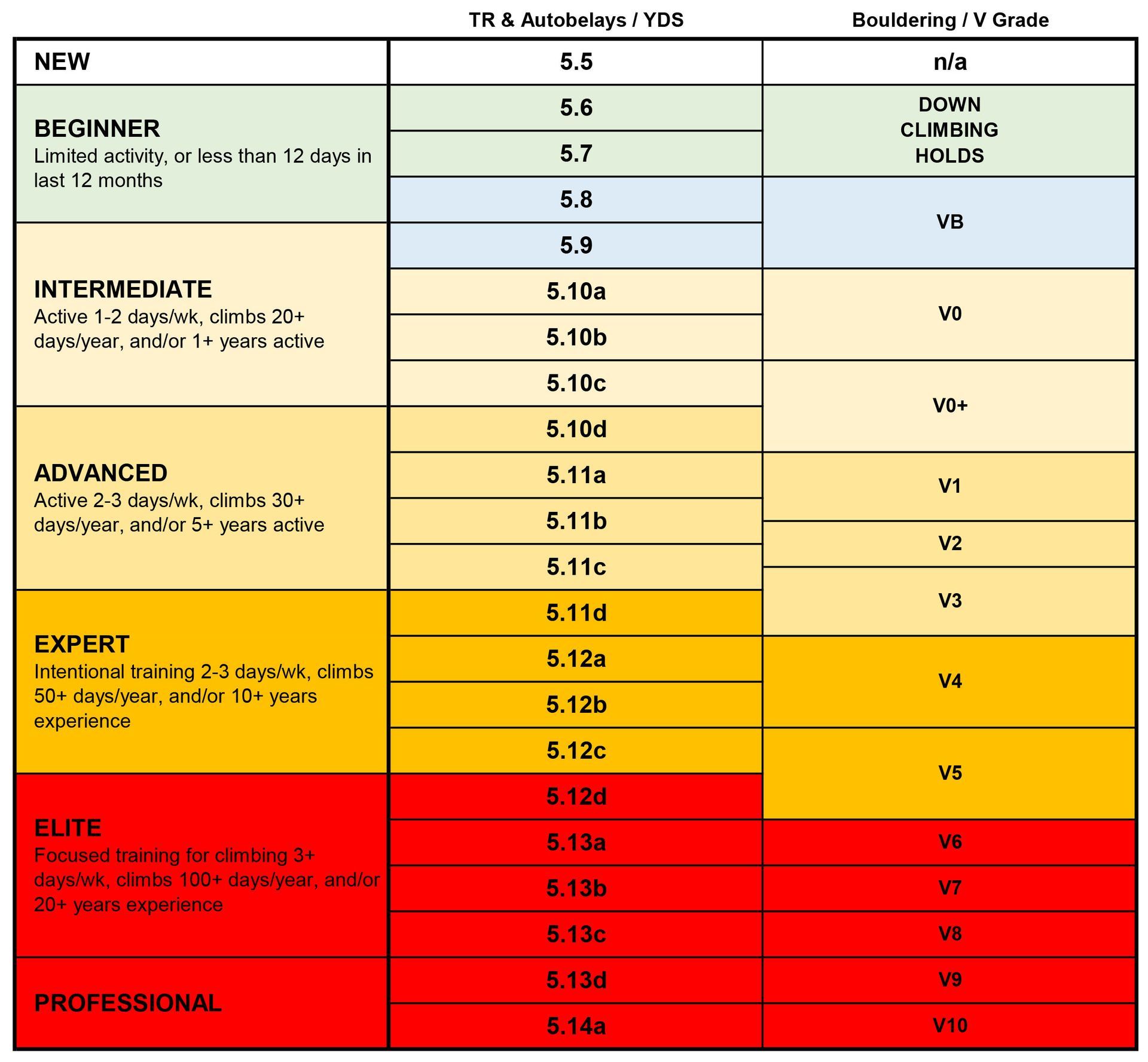FACILITY INFO
-
FACILITY RULES
All visitors must…
- Check-in at the beginning of each visit. If you have not checked-in, you do not have permission to use the facilities.
- Complete a “New Participant Orientation” with a Source employee before participating in any climbing or non-climbing activities, including supervising another visitor or use of any climbing equipment.
- Display a Source Climbing Center belay card at all times when belaying another climber, lead climbing, and/or using an auto-belay system.
- Always stand clear of climbers' fall and swing zones, keep the walkways and exits clear, and place all belongings in lockers or proper storage cubicles.
- Do not be under the influence of alcohol, or any recreational or prescription drugs that could impair alertness or coordination.
- Report any unsafe condition or damage to equipment or the climbing walls, including loose holds.
- Report any accident or injury immediately to gym staff.
SUPERVISING YOUTH
- Youth under 14 must be accompanied by an adult over the age of 18. Drop-offs are permitted only for parties and supervised activities.
- Youth under 12 are not allowed in the Lead and Bouldering areas on the main level. Exceptions may be made for Source Team members and during supervised youth programs and camps.
- Youth under 12 require direct supervision when using any auto-belay system. ‘Direct’ means only one youth per supervising adult is climbing with the use of a top-rope or autobelay.
- Youth 8 & under must not roam the facility unsupervised and should be in direct reach (within arm’s length or on belay) of an adult when not on the mezzanine.
- Distracting or disruptive behavior (running under climbers, swinging on ropes, or use of loud voices) may result in being asked to leave the facility.
-
CLIMBING RULES
AUTOBELAYS
- All visitors must complete the Source Climbing Center “New Participant Orientation” before supervising or participating in the use of an autobelay system
- Always check your equipment before climbing with an Autobelay.
- Do not use headphones when climbing with an Autobelay.
BOULDERING
- Never boulder, or climb without a belay with any part of your body above a height of 14 feet on Main level or 10 feet on Mezzanine level.
- Always keep fall zone clear when bouldering. Spotters are recommended only to protect climbers from people, objects and/or obstacles in their fall zone.
TOP ROPE BELAYING & CLIMBING
- Belayers must demonstrate proper use of their equipment, and their ability to tie a “figure-of-eight-knot” to a Source employee before participating in belaying another climber.
- Use only approved ABD (Assisted Braking Device) type of belay devices when belaying a climber.
- Be attentive at all times. Stand within 12 feet of the wall and while “on belay”, no sitting or lying down while belaying.
- Youth under 12 are not permitted to belay another climber unless under the supervision of a Source staff member during approved source programs. Youth under 9 are NOT permitted to belay another climber at any time, under any circumstances.
LEAD BELAYING & CLIMBING
- Climbers and belayers must pass the Source Climbing Center “lead check” before participating in any lead belaying or climbing.
- Check for conflicting or intersecting routes before climbing. The second party to leave the ground must yield at a safe distance that won’t endanger either party in the event of a fall.
- Clip all draws before the entire body passes them, and in the order that they appear on that climb. Also, the final anchor should be clipped before lowering. Recognize and reverse and “back clipping” and/or “Z-clips” before climbing on.
- Do not take intentional lead falls or hang personal quickdraws.
- Belayer to protect climbers fall from people, objects and/or obstacles until they are clipped the first anchor.
- Stay within arm’s reach of the wall for the duration of the first four clips and within eight feet of the first clip, thereafter, when belaying a lead climber.
- Keep a minimum of the top four draws clipped when setting a line for top rope, and limit attempts to ONE per climb during busy times.
- Youth under 12 are not permitted to lead belay or climb at any time under any circumstances.
-
PHILOSOPHY
The Source is a firm believer in the Climbing Wall Association's Four Point Universal Warning:
Climbing is Dangerous
Climbing offers positive benefits and rewards such as adventure, enjoyment, and fitness. Climbing also offers risks, including the risk of injury or death, which cannot be entirely eliminated from the sport. You must be willing to accept both the risks and the rewards of climbing.
Qualified Instruction Is Required
In the past, climbers developed their knowledge, skills, and judgment through years of mentoring, training, and exposure to a variety of environments and experiences. The proliferation of advanced equipment, improved techniques, and easy access to indoor climbing venues, has made climbing accessible to many more people. New climbers, for example, are now able to develop the ability to ascend difficult climbs rapidly through intensive coaching and training. However, these new climbers may lack the knowledge, breadth of experience, and good judgment that builds a solid foundation to be a successful climber or mountaineer in unpredictable outdoor environments. If you are unfamiliar with any aspect of climbing, seek qualified instruction.
Use Equipment According to the Manufacturer’s Instructions
Manufacturers and distributors of gear find that climbing equipment is sometimes used incorrectly. Please use climbing equipment for its intended purpose and according to the manufacturer’s instructions for use, care, inspection, and retirement.
Your Safety is Your Responsibility
If you climb, you must assume personal responsibility for your own safety. You must acquire knowledge about climbing, develop climbing skills, and exercise good judgment to be a safe and responsible climber. Climb for a lifetime, ClimbSmart!™
TOP ROPE
LEAD
BOULDER
FITNESS
CLIMBING
GRADES
